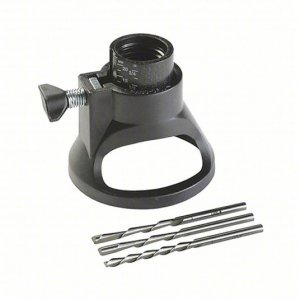- Joined
- Feb 1, 2015
- Messages
- 9,621
I would drill the holes out as deep as I could with a 3/4" drill to provide a pocket for a 3/4" end mill or router bit. Position the work under the end mill mounted in the drill press, using the drilled hole as a centering guide and clamp the work securely to the table. Run the drill press as slow as possible to minimize chatter and slowly lower the end mill until you reach your required depth.They've all been drilled at 17/64". I would need a counter bore with an OD of 0.750 and a 17/64 pilot. Where would I find such a tool?
Run a practice piece on some scrap first to get the process down pat. You should be able to get reasonably clean counterbores. I have had good luck with Yonico router bits. https://www.amazon.com/Yonico-14955...nico&s=power-hand-tools&sr=1-20&ts_id=3116511


 Just ask for one in the wanted section .
Just ask for one in the wanted section . 